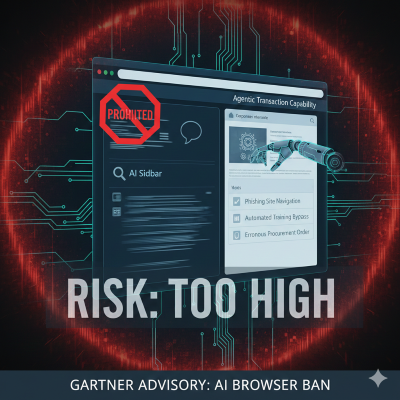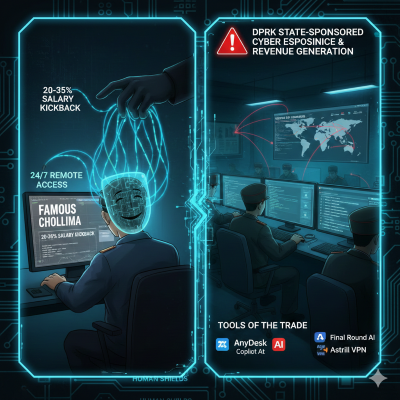Weekly Roundup
-
What’s New in Cybersecurity This Week: Projects, Videos, Articles & Podcasts I’m Following – 12/8/25
Welcome to my weekly cybersecurity roundup! Here, I share updates on the projects I’m currently working on, along with the most insightful cybersecurity videos I watched, articles I found valuable, and podcasts I tuned into this week. Featured Analysis Featured article analysis: Block all AI browsers for the foreseeable future: Gartner Based on the advisory
-
What’s New in Cybersecurity This Week: Projects, Videos, Articles & Podcasts I’m Following – 12/1/25
Welcome to my weekly cybersecurity roundup! Here, I share updates on the projects I’m currently working on, along with the most insightful cybersecurity videos I watched, articles I found valuable, and podcasts I tuned into this week. Featured Analysis Featured article analysis: North Korea lures engineers to rent identities in fake IT worker scheme This
-
What’s New in Cybersecurity This Week: Projects, Videos, Articles & Podcasts I’m Following – 10/13/25
Welcome to my weekly cybersecurity roundup! Here, I share updates on the projects I’m currently working on, along with the most insightful cybersecurity videos I watched, articles I found valuable, and podcasts I tuned into this week. Featured Analysis Featured article analysis: Satellites found exposing unencrypted data, including phone calls and some military comms This
-
What’s New in Cybersecurity This Week: Projects, Videos, Articles & Podcasts I’m Following – 9/29/25
Welcome to my weekly cybersecurity roundup! Here, I share updates on the projects I’m currently working on, along with the most insightful cybersecurity videos I watched, articles I found valuable, and podcasts I tuned into this week. Featured Analysis Featured article analysis: US Auto Insurance Platform ClaimPix Leaked 10.7TB of Records Online This colossal data
-
What’s New in Cybersecurity This Week: Projects, Videos, Articles & Podcasts I’m Following – 9/8/25
Welcome to my weekly cybersecurity roundup! Here, I share updates on the projects I’m currently working on, along with the most insightful cybersecurity videos I watched, articles I found valuable, and podcasts I tuned into this week. Featured Analysis Featured article analysis: Hackers Weaponize Amazon Simple Email Service to Send 50,000+ Malicious Emails Per Day A
-
What’s New in Cybersecurity This Week: Projects, Videos, Articles & Podcasts I’m Following – 8/4/25
Welcome to my weekly cybersecurity roundup! Here, I share updates on the projects I’m currently working on, along with the most insightful cybersecurity videos I watched, articles I found valuable, and podcasts I tuned into this week. Featured Analysis Featured article analysis: Hacker extradited to US for stealing $3.3 million from taxpayers The article details the










